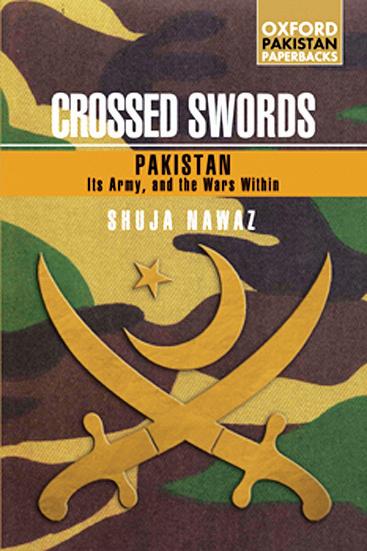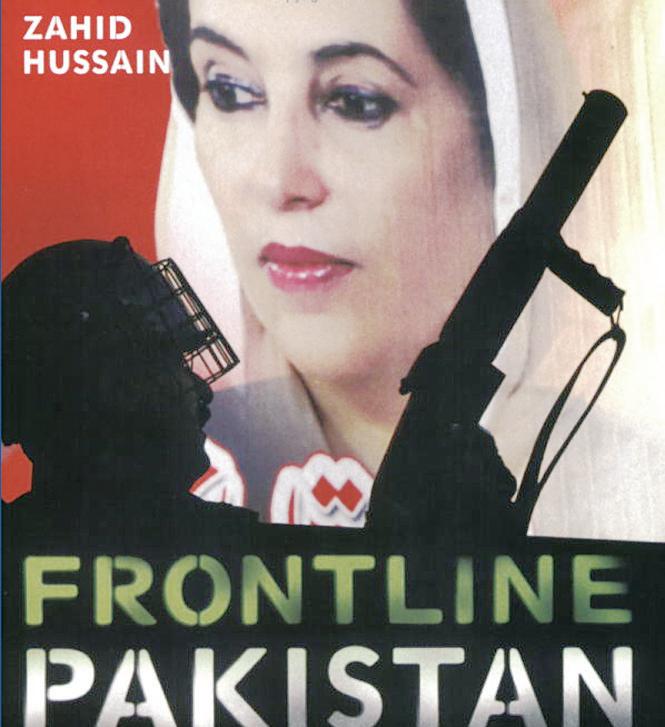
7 minute read
Of politics and principles
from 2009-09 Sydney (1)
by Indian Link
With the world’s attention on Afghanistan and Pakistan, and the new term “Afpak” in vogue coupling the two countries together in terms of policy making, a few timely and very informative books have been published recently on the subject, that deserve attention. Zahid Hussain’s Frontline Pakistan (IB Taurus, 2008) is one of them: it is a candid account of factors leading to the rise of fundamentalism and radical Islam in Pakistan. It is a well written, easy-to-read, dispassionate book which chronicles Pakistan’s ‘path to catastrophe’ with events begun in the 1950s, accelerated under Zia ul Haq, which have led to that country hurtling towards disaster.
The third and the fourth chapters are by far the most informative: they deconstruct, layer by layer, the numerous Jihadi organisations in Pakistan; their objectives; their power base; their leaders; the madrassas that spawn them; their targets, and most important of all, the ubiquitous Pakistani Intelligence organisation ISI’s relationship with them. The chapter on Kashmir explains the ‘tight-rope’ that Pakistani leadership has to walk –increasingly tilted in favour of the Jihadis. The ISI’s unwillingness to sever their ties with those Islamist-Jihadi groups fighting in Kashmir or Afghanistan make plain the fact that the ISI and the military in Pakistan are a law unto themselves, and are beyond civilian government control.
Ahmed Rashid’s Descent Into Chaos and William Dalrymple’s review in NYRB Feb 12 2009 (www.nybooks. com/articles) is another thought-provoking book on Pakistan today. Rashid – a well known journalist with several books on the Taliban, Afghanistan and Central Asia under his belt –pulls no punches when it comes to Pakistan’s duplicitous policies towards Afghanistan and India. Over the years he has seen Karzai turn increasingly bitter at American failure to invest in his country; and at Pakistani attempts to destabilise it. He watched with utter disbelief the Americans’ inability to prevent Bin Laden’s escape into Pakistan, as well as America’s tacit approval to Pakistan to fly some of the Al Qaida leadership out of Kunduz.
On Pakistan, the land of his birth, Rashid is scathing. The Taliban make no secret of their safe havens across the border in Pakistan; there are suicide bombers trained at Pakistani madrassas; mullahs across the border who commission the murder of women in public life… It is common knowledge, and Afghan and NATO officials complain bitterly that elements in
The situation in Pakistan has incited strong views by authors which reflect the country’s current status quo, discovers CHITRA
SUDARSHAN

the Pakistani military and the intelligence service, ISI, protect the insurgents.
Pakistan’s policy in Afghanistan is tied in with its great rivalry with India. The military sees Afghanistan as offering a hinterland, “strategic depth”, and also training facilities for a future conflict. India’s huge aid programme in Afghanistan, Rashid points out, adds to Pakistan’s paranoia. However, it is not just Afghanistan, but Pakistan itself that has been damaged in the process. Rashid reminds us just how much the west, America in particular, was culpable in creating this incendiary scenario, with their unstinting support for generals who deposed elected governments, imprisoned politicians and nurtured fundamentalist Islamist parties. Billions of dollars were sent from Washington to the Pakistan military as supporters in the Cold War, and significant funds went to Muslim fundamentalists.
General Musharraf, Rashid points out, was just the latest military strongman successfully to manipulate Washington. He received huge funds and weaponry while being portrayed, by both himself and the US, as a staunch ally in the “war on terror”. It was only belatedly that US officials cottoned on to the fact that Pakistan was not only doing little to pursue Al Qaida and the Taliban – but its senior officials were complicit in harbouring them.
Rashid believes that the emergence of civil society in Pakistan and a dilution of military power may help to heal the violent fractures in the region –however, there is little even in his own book to support such optimism. Rashid points out, for instance, that 90% of the $10 billion in aid that the United States has provided Pakistan since 9/11 has gone to the military rather than to development; months after the elections, Pakistan remains in leaderless drift while the military and ISI carry out their private deals with the Islamists at will. It is therefore difficult to see how Pakistan can rout the Taliban – as Rashid suggests as a first step.
Afghan and NATO officials complain bitterly that elements in the Pakistani military and the intelligence service, ISI, protect the insurgents.
Shuja Nawaz’s books, Crossed Sword: Pakistan, Its Army and the Wars Within (OUP June 2008); and FATA: A Most Dangerous Place, (2009), based on 30 years of research and analysis, is a systematic and historical analysis of the nature and role of the Pakistan army in the country’s politics. He examines the army and Pakistan in both peace and war, using many hitherto unpublished materials from the archives of the United States, the United Kingdom, and the General Headquarters of the Pakistan Army. In the process he sheds light not only on the Pakistan Army and its US connections, but also on Pakistan as a key Muslim country in one of the world’s toughest neighbourhoods. In doing so, he lays bare key facts about Pakistan’s numerous wars with India and its many rounds of political musical chairs, as well as the Kargil conflict of 1999. He concludes that the military domination of Pakistani society has stunted the country’s political growth, and that the army’s obsession with Indian hegemony has perverted relations with neighbours and allies. He then draws lessons from this history that may help Pakistan end its wars within and create a more stable political entity. This is easier said than done: as long as the military dominate this fractious society, its desire for parity with India will skew internal politics; as long as the Islamists are pandered to, they will continue to call the shots; and as long as the political leadership remains weak, the military will dominate. This brings us to the crux of the matter that is addressed through William B Milam’s book Bangladesh and Pakistan: Flirting With Failure in South Asia. That at the heart of both countries’ problems is their fundamental inability to settle on a national identity: more than 60 years since its inception, this issue is particularly acute in Pakistan. Was it created simply as a homeland for Indian Muslims who chose not to live in a Hindu-majority country? Or was it always meant to be a messianic flag bearer for pan-Islamism, the world’s first modern nation formed on the basis of faith alone? The former interpretation, favoured by the nation’s Anglicized founder, Mohammed Ali Jinnah and by many of the country’s Englishspeaking elites, is broadly compatible with contemporary ideas of democracy and human rights. The latter view leads naturally to one of Pakistan’s most fraught internal debates. Why demand a country for the Muslims, argue the Islamists, if not to implement divinely ordained Islamic law? In just how this basic debate is resolved, lies the key to Pakistan’s future. of all China. Japan’s export of technology as well as aid has helped. However, this has not erased those countries’ wartime memories of Japan. Memories in Asia can be long indeed!

Shuja Nawaz concludes that the military domination of Pakistani society has stunted the country’s political growth … as long as the military dominate this fractious society, its desire for parity with India will skew internal politics.
(Frontline Pakistan) is a well written, easy-to-read, dispassionate book which chronicles Pakistan’s ‘path to catastrophe’ with events begun in the 1950s, accelerated under Zia ul Haq, which have led to that country hurtling towards disaster.









The most important post-World War II event in Asia is the emergence of China and India as industrial and military powers. These fast urbanising and industrialising billion-people nations need foodstuff and minerals, particularly metals, coal and uranium. Australia is well placed geographically with its abundant resources to supply these raw materials. It is also well placed geographically to provide higher education and for tourism.
But geography is not enough. Australia needs cultural engagement with these countries, which it has promoted since the 1970s. Progress was initially slow; the way Asian countries were portrayed in Australian schools and in the media had to be overhauled, and that has been achieved, to some extent. However, recent troublesome events demonstrate that more needs to be done in the relationship with the two Asian giants: China and India.
China has experienced a spectacular change in Australian perception. Once regarded as the “yellow peril”, it provided the impulse for Australia to enact its White Australia policy. After World War II, the “yellow peril” gave way to “red peril” when communism was entrenched in China. Today, a resurgent modernising China is being looked upon as the school in Sydney, given that India has a large civil aviation industry?
Ironically, Australia which once regarded China as an adversary is prepared to sell it uranium ore. On the other hand, India, always considered as a democratic friend and fellow Commonwealth member, is being denied this privilege on the ground that India has not yet signed the nuclear non-proliferation treaty. Hopefully, the treaties signed by India with the United States and other major atomic suppliers like France and Russia will help Australia to change its mind.
Australia and several countries are wary of China in the long term. Its military strength is increasing by leaps and bounds. Australia is modernising its navy at a huge expense so that it can deploy vessels in both, the Pacific and Indian oceans. The interests of Australia and India converge in the Indian Ocean. The value of the Indian navy has been vividly demonstrated in recent times by its intercepting of some Somali pirate vessels which menaced shipping from all nations close to the horn of Africa.
India has recently reached a free trade agreement with the ten-nation ASEAN bloc. Tariffs will progressively be reduced on most items to just 5%. Australia is also moving in the same direction. Australia’s and India’s strategic interests converge in Southeast Asia. There has to be a far greater canvass for the Indian-Australian relationship than just that of a student market. A sensitive approach on all sides is called for.










